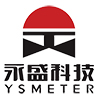The leakage of the shut-off valve is as low as possible. The leakage of the soft-sealed valve is the lowest. Of course, the shut-off effect is good, but it is not wear-resistant and has poor reliability. Judging from the double standards of small leakage and reliable sealing, soft sealing is not as good as hard sealing. For example, a full-function ultra-light regulating valve, sealed and stacked with wear-resistant alloy protection, has high reliability, and has a leakage rate of 10-7, which can already meet the requirements of a shut-off valve.
It involves a simple mechanical principle: high sliding friction and low rolling friction. The valve stem of the straight-stroke valve moves up and down, and the packing is slightly compressed, it will pack the valve stem very tightly, resulting in a larger return difference. For this reason, the valve stem is designed to be very small, and the packing uses PTFE packing with a small friction coefficient to reduce the backlash. However, the problem is that the valve stem is thin, which is easy to bend and the packing life is short. The best way to solve this problem is to use a travel valve stem, that is, a quarter-turn valve. Its stem is 2 to 3 times thicker than a straight-stroke valve stem. It also uses long-life graphite packing and stem stiffness. Good, long life of the packing.
The cut-off pressure difference of the quarter-turn valve is relatively large, because the resultant force generated by the medium on the valve core or valve plate produces a very small torque on the rotating shaft, so it can withstand a large pressure difference.
The straight-stroke valve spool is a vertical throttling, and the medium flows in and out horizontally, the flow path in the valve cavity will inevitably turn and reverse, which makes the flow path of the valve quite complicated (the shape is like an inverted S-shape). In this way, there are many dead zones, which provide space for the precipitation of the medium, and if things go on like this, it will cause blockage. The direction of throttling of the quarter-turn valve is the horizontal direction. The medium flows in and out horizontally, which is easy to take away the dirty medium. At the same time, the flow path is simple, and the space for medium precipitation is small, so the quarter-turn valve has good anti-blocking performance.
For single core, when the medium is flow open type, the valve stability is good; when the medium is flow closed type, the valve stability is poor. The double-seat valve has two spools, the lower spool is in flow closed, and the upper spool is in flow open. In this way, when working at a small opening, the flow-closed spool is likely to cause valve vibration. This is a double-seat valve. The reason why it cannot be used for small opening work.
The advantage of the double-seat valve core is the force balance structure, which allows a large pressure difference, but its outstanding disadvantage is that the two sealing surfaces cannot be in good contact at the same time, resulting in large leakage. If it is artificially and compulsorily used for cutting off occasions, the effect is obviously not good, even if many improvements (such as double-sealed sleeve valve) are made for it, it is not advisable.

